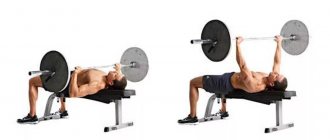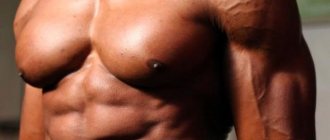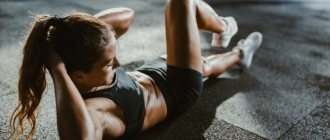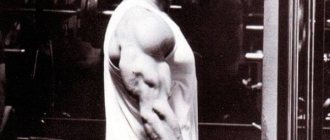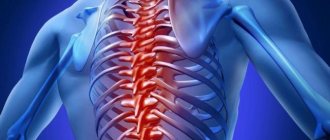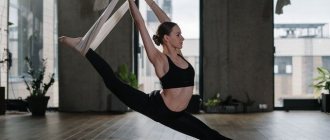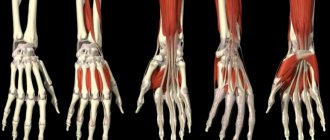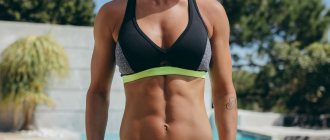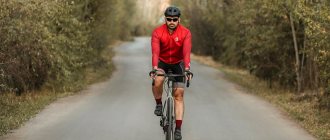Legs | Back | Chest | Shoulders | Triceps | Biceps | Press
The triceps brachii muscles make up about two-thirds of the upper arm, so if you want big arms, working your triceps is a must. The problem is that every athlete has a different approach to their training. Some people simply do various types of push-ups, while others spend an entire hour at a dumbbell rack. What's better? Well, it depends on what kind of exercise you are planning to do.
Therefore, for this article, from dozens of existing exercise options, the 10 best for the development of the triceps muscles were selected, and they were selected according to the following criteria:
- Easy to learn and perform
- General muscle stimulation and intensity
- Popular among professional athletes and bodybuilders (This is important!)
- Availability of equipment in gyms
You can also put these exercises into practice with the three complete workouts below. Combine one with the best chest exercises on Monday and another with biceps on Friday, and you've got a recipe for bigger arms. Just remember to eat and take supplements for muscle growth!
The best triceps exercises
In order to pump the triceps symmetrically, it is important to understand which part of the muscle the load falls on in individual exercises. The triceps brachii muscle is divided into three parts: the lateral, medial and long heads.
- The lateral head is located on the outside; it is this that gives a clear and beautiful relief to the muscles when viewed from the front and back.
- The long head is located on the inside closer to the body.
- The medial one is located under the other heads, as if pushing them out from the inside, which is why in order to pump and create full volume, men need to pay attention to all the triceps bundles.
Close grip barbell press
This exercise is basic, which serves primarily to develop the pectoral muscles. But do not forget that triceps is a synergist of both the chest and deltoids, so basic exercises also develop the target group. The close-grip press in particular works the triceps to the limit, increasing their size and strength.
- You need to lie on a horizontal bench so that the bar is above eye level.
- Place your palms the width of your shoulder joints, and then remove the bar from the racks.
- As you inhale, the bar lowers under the chest - to the lower part of the ribs. The elbows bend along the body without going to the sides.
- As you exhale, use your triceps and chest to press the barbell into a vertical position, with your elbows fully straightened.
One-arm dumbbell extension from behind the head
An isolating exercise for the long head of the triceps, which allows you to work each muscle individually in the most concentrated way without assistants.
- Taking one dumbbell, you need to raise your arm to a vertical position, keeping your elbow motionless at one point throughout the approach.
- As you inhale, it is important to slowly lower the dumbbell behind your head, towards your shoulder blade, but not touch it.
- As you exhale, you should extend the elbow, making the movement using the strength of the triceps.
- The same is done on the second hand.
Read more about overhead arm extension →
Extension of one dumbbell with two hands
This option also develops the long head to a greater extent, but the technique becomes simpler and the load is lighter due to the movement being performed with both hands at the same time.
- Holding the weighted disk with both palms, you need to lift the dumbbell above your head, fixing your elbows at one point.
- As you inhale, bend your elbows, moving the dumbbell behind your head, but without touching your spine. It is important to press your elbows as close to your head as possible.
- With an exhalation, the arms are extended; the elbows at the top point do not need to be fully straightened, so as not to overload the joints.
French press with a barbell while sitting or standing
To perform this exercise, you will need a curved bar; this is necessary to comfortably hold the barbell without putting stress on your hands. Also the long head is the target here.
- The technique is performed sitting or standing; to do this, you need to place your palms with a narrow grip on a curved bar and raise them above your head.
- As you inhale, bend your elbows, lowering the bar behind your head.
- As you exhale, as usual, you need to straighten your elbows, but do not straighten them completely.
French bench press with barbell
And this option is performed while lying on a bench. It would also be useful to perform the bench press on a special bench, the racks of which are designed specifically for performing the French press and are located not behind the head, but in front. You can also lift the barbell from the floor yourself.
- You can perform the bench press either with a curved bar with a narrow grip or with a straight, medium grip.
- Holding the bar, the bar must be placed vertically above the body and the elbows secured.
- As you inhale, keeping your shoulders motionless, bend your elbows, lowering the bar onto your forehead without touching your head.
- As you exhale, use your triceps to extend your elbows.
French press with dumbbells
In this option, the load is received by the weight of the triceps bundles, because to hold these projectiles, all fibers are involved in the work.
- You need to pick up dumbbells and lie on your back, straightening your arms in a vertical position.
- Having fixed your elbows, while inhaling, bend your elbows; your forearms with dumbbells move parallel to each other.
- With an exhalation, the arms return to their original position.
Learn more about the French press exercise →
Pullover
Another exercise, the target muscle of which is still the pectorals, but the load on the triceps is no less, which is why we will consider it. In addition, this is one of the techniques that stretches and loosens the shoulder girdle, which should be performed along with fiber contraction. The exercise is performed with both a barbell and a dumbbell.
- Let's look at the technique using a dumbbell as an example: with both hands you need to hold the weighted disc of the dumbbell from below.
- Next, you need to lie on your back and lift the projectile vertically, slightly bending your elbows. It is important to fix this position of the hands and not change during the approach.
- As you inhale, the projectile is pulled back behind the head, stretching the muscles of the chest and triceps. In this case, the chest should bend.
- While exhaling, keeping the chest round, you should return the projectile using the target muscles to the starting position, without changing the angle at the elbows.
Read more about the pullover exercise →
8. Bent-over one-arm dumbbell extension
This technique allows you to concentrate on each side. Especially the lateral head of the triceps. You can perform the technique with emphasis on your hips or on a horizontal bench.
- With your knee and palm resting on the bench, you need to fix your torso in an inclined position.
- The elbow of the working arm with the dumbbell should be pressed to the body, and the forearm should be relaxed, lowered perpendicular to the floor.
- With an exhalation, the arm is extended to a horizontal position, while at the top point the hand needs to be slightly pronated, that is, the back side should be turned towards the floor, feeling a shift in the load on the lateral – outer head.
- As you inhale, keeping the elbow motionless, the forearm lowers to its original position.
- Then the same is done on the other hand.
Read more about bent over arm extension →
Exercise grasshopper
Similar to the previous option, the exercise is performed in a tilted position with both hands at the same time. Also in this technique you can pronate your hands, increasing the load on the outer head.
- You need to take dumbbells in both hands, place your feet shoulder-width apart and tilt your torso (the exercise can also be done while sitting at an angle), holding it slightly above the horizontal line. It is important to keep your back straight, creating tension in the stabilizer muscles. Elbows - press to the body, keeping the shoulder parallel to the floor.
- With exhalation, full extension of the arms is performed, preferably with pronation of the hands. The forearms move parallel.
- As you inhale, lower the dumbbells to a neutral position.
10. Extension in the upper block with a straight handle
The exercise develops all triceps bundles; to perform it, you need to attach a straight handle to the upper block of the crossover.
- With your palms, you need to grab the handle with a medium or narrow grip, for greater development of the lateral head. The torso should be slightly tilted forward and the knees should be slightly bent, and the elbows should be pressed to the torso.
- As you exhale, you need to fully straighten your elbows, lowering the handle to your hips.
- As you inhale, you should slowly bend your arms without moving your elbows.
11. Extension in the upper block with a reverse grip
Performing the exercise with a reverse grip, that is, from below, allows you to pump your forearms in addition to the triceps.
- Grabbing the straight handle with an underhand grip shoulder-width apart, you need to press your elbows to your body, leaning slightly forward and bending your knees.
- As you exhale, the handle is lowered to the hips due to the strength of the triceps.
- As you inhale in the negative phase, the triceps relax.
12. One-arm crossover extension with a reverse grip
And this option already allows you to concentrate on working on the muscles separately. This requires a D-shaped handle. You can also extend your arm with a rope handle, but the grip will change.
- Having attached the handle to the upper block, you need to take it with an underhand grip.
- As you exhale, the triceps fully extends the arm at the lowest point.
- As you inhale, you relax.
Bent-over extension in the lower block
This option is an alternative to dumbbell extensions. To perform extensions, you need to attach a rope handle to the lower block.
- Having grabbed one edge of the rope, you should tilt your torso, putting one leg back for stability. The elbow of the working hand should be pressed to the body, with the free hand resting against the frame.
- With an exhalation, the hand extends, moving the rope back, while it is advisable to pronate the hand to engage the lateral head.
- As you inhale, the hand slowly performs the negative phase, relaxing the triceps.
Extension on the lower block while sitting
This exercise should be performed while sitting, using a curved or rope handle. Since this is an alternative to free weight exercises lifted from behind the head, the work will also involve more of the long heads.
- Grasping the handle attached to the lower block, you should turn your back to the slabs and sit on the bench, raising your arms to a vertical position.
- Having fixed your elbows in one position, while inhaling, you should slowly lower the handle behind your head.
- As you exhale, use your triceps to straighten your arms.
Extension with ropes in the upper block
Thanks to the rope handle, the movement of the hands becomes more mobile, which allows you to turn them in the desired direction, contracting the outer heads of the triceps.
- Having grabbed the edges of the ropes, as usual, you need to slightly bend your knees and move your torso forward, pressing your elbows to your sides.
- With an exhalation, the elbows are fully extended with the palms slightly turned back, increasing the load on the outer sides of the shoulder.
- As you inhale, relax your arms without changing the position of your elbows.
Read more about block arm extension →
Crossover extension from behind the head
You can perform the exercise both in the upper block and in the lower one. Both options are correct, you just need to choose the most convenient one for yourself, in which the work of the triceps is felt best. For these extensions you will need a rope handle. The technique in both cases is identical.
- Holding the edges of the ropes, you need to turn your back to the block, lunging with one leg forward for stability.
- Next, you should tilt your torso forward, about 45 degrees, so that the handles do not touch your head, and, bending your elbows, hold the handle behind your head. The shoulder should be pressed as close as possible to the head, without changing position throughout the approach.
- As you exhale, the elbows straighten completely; you can pronate your hands more strongly at the top for external beams.
- As you inhale, slowly lower the rope behind your head.
Extension with two arms in a lying crossover
For this option you will need a horizontal bench. This is an alternative to the French barbell press.
- Having placed the bench at a short distance from the block, you should grab the straight or curved handle attached to the lower block. Next, you need to turn your back to the block and slowly lie on your back.
- Having assumed a horizontal position, your arms should be raised up strictly vertically.
- As you inhale, bend your elbows and lower the handle to forehead level. The shoulder of both hands remains motionless.
- As you exhale, the elbows straighten completely.
Reverse push-ups
The bodyweight exercise, which is also basic, is performed on a low bench or platform. You can also use additional load in the form of a pancake on the hips, or by placing your feet on a different height, increasing the load.
- Turning your back to a hill, you need to place your palms on the edge under the shoulder joints. The pelvis is suspended on the bench. The heels rest on the floor.
- As you inhale, bend your elbows, lowering your pelvis lower to the floor.
- As you exhale, use the triceps to fully straighten your arms.
Read more about reverse push-ups →
Dips
The basic exercise serves to strengthen not only the pectoral muscles, but also the triceps, and the smaller the distance between the bars, the stronger the triceps work.
- With your arms straight on the bars, you should hang with your knees bent, but not sag at your shoulders.
- As you inhale, bend your elbows at right angles.
- With an exhalation, push-ups are performed with the triceps, returning to the starting position.
Read more about dips →
Narrow push-ups
The narrow position of the palms allows you to work the triceps, and the narrower the position, for example in diamond push-ups, when the fingers are connected to form a diamond figure, the stronger the outer parts of the triceps work.
- By placing your palms under your shoulder joints, you need to take a plank position - a solid, straight line from the top of your head to your toes.
- As you inhale, bending your elbows and bringing them closer to your body, your chest moves towards the floor.
- As you exhale, due to the force of your arms, your elbows are fully straightened.
Arm extension with TRX from behind the head
Gymnastic rings are also suitable for this option. The exercise works not only the triceps, but also statically develops all the stabilizer muscles to hold the body in the correct position.
- Having grabbed the loops, you need to move your body forward, resting on your toes, and raise your arms above your head, forming a straight line with your whole body.
- As you inhale, you need to slowly bend your elbows, without moving them, and move your hands behind your head.
- As you exhale, you should fully straighten your elbows using your triceps, keeping all the muscles of your body toned.
TRX push-ups
Another type of push-ups, the advantage of which for the triceps is the unstable position of the body, that is, with emphasis on the loops.
- Having adjusted the height of the loops - just above the floor, you need to grab the handles with your palms and take the position of the bar, fixing your lower back. The palms are in one straight line, as in the version on the floor.
- As you inhale, the elbows bend, moving to the sides, and the chest tends to the floor.
- As you exhale, smoothly, without losing your balance, use your arms to return to the starting position, fully straightening your elbows.
Day 3: Intense cardio workout for slimming legs
On the third day we will work on slimming our legs, and also diversify our strength program with cardio exercises. Cardio exercises for legs will help you burn more calories, increase blood circulation in problem areas and get rid of thigh fat. This workout will get your muscles burning, so stock up on water and get ready for some intense work.
See also:
Scissor jumps
Place your feet wider than your shoulders and extend your arms to the sides. Now perform energetic jumps, crossing your legs and arms. Jump at a medium amplitude without bouncing too much to maintain a steady pace. But you also shouldn’t rush, otherwise the muscles won’t get enough load. Active cardio exercise accelerates your metabolism and strengthens your leg muscles from your calves to your thighs and buttocks.
How many to perform: 20-25 crossings.
Calculate your ideal sports weight!
Jumping + sumo deadlift
Place your feet as wide apart as possible, spread your toes to the sides, and lower your arms along your body. Lower yourself into a sumo squat, leaning your body forward until your hands touch the floor. From the bottom point, jump to return to the starting standing position. Then jump back into a sumo stance and repeat all over again. Functional exercise for the hips and buttocks not only strengthens the muscles, but also improves the endurance and explosive power of the body.
How much to perform: 15-20 repetitions.
Low lunges with kick
Standing straight, lunge back with your right leg and bend down, trying to touch your right foot with your left hand. In this case, the knee of the left leg should almost touch the floor. As you come up, kick your left leg forward and then return to the lunge. Do all reps on one leg and then the other. Low-impact cardio exercise increases blood circulation, promoting fat burning, and also strengthens the muscles of the thighs and core.
How much to do: 12-15 repetitions first on one leg, then 12-15 repetitions on the other leg.
Skater
Stand straight with your feet together. Now lower yourself into a half squat, tilt your body forward. From this position, move your right leg to the side and touch your left foot with your right hand. Go back and repeat on the other side. Perform the exercise at a fast pace, trying to change legs not by steps, but by jumping. Skaters are often included in leg training at home due to the high effectiveness of the exercise not only for working out muscles, but also for fat burning and weight loss.
How much to perform: 12-15 touches with each hand (25-30 in total).
Squat Jumps
Lower yourself into a classic squat so that your knees are bent at right angles and in line with your toes. From this position, jump lightly without fully extending your knees and return to a squat. This seemingly simple exercise will make your muscles burn as it puts your thighs, buttocks and legs under full tension, and the cardio pace will help you shed pounds.
How much to perform: 15-20 repetitions.
Jumping Jack with swings
Place your feet together, arms hanging freely. Take a jump, spreading your legs and arms to the sides. After returning to the starting position, swing your leg forward, trying to touch the palm of the opposite hand, which you also extend forward. Then jump again and swing your other leg in the starting position. This moderate-intensity functional leg exercise can be easily done at home if you want to speed up your weight loss process and get your thighs in great shape as quickly as possible.
How much to do: 8-10 swings on each leg.
Double jump squats
Place your feet shoulder-width apart and fold your arms in front of you. Do a squat using the classic technique and return to the starting position. Now squat down again and jump up as you rise. Then lower yourself back into a squat and repeat all over again. Exercise will help you not only strengthen your thighs and buttocks, but will also improve your endurance and increase the physical capabilities of your body. Squat + jump squat is one repetition.
How much to perform: 12-15 repetitions.
Plank squat
Get into a plank position with your arms straight, making sure your palms are directly under your shoulder joints and your pelvis is in line with your back and legs. Now step each foot towards your palms, and without straightening your knees, lift your body up. At the same time, do not change the position of your hands to make it easier to return to the starting position. Now place your hands on the floor, then step each leg back to plank and repeat all over again. A difficult but effective exercise for the hips that you can do at home to quickly get the body of your dreams. Don’t forget to step with your right foot in the first approach, and with your left foot in the second approach for an even load (or alternate repetitions).
How much to perform: 10-12 repetitions, first with one leg, then 10-12 repetitions with the other leg.
Step squats with arm raises
Place your feet together and lower yourself into a squat. Place your arms along your body and touch your toes to your feet. As you rise, raise your arms up and move your right leg to the side. Return to the squat and on the next lift, raise your arms up again, but put your left leg aside. Exercise vigorously to burn as many calories as possible and speed up your metabolism, which will help you lose weight faster.
How much to do: 8-10 repetitions on each leg.
Jump Squats
Place your feet together, hands behind your head, and lower yourself into a squat. From this position, jump up, spreading your legs to the sides, then jump back to the starting position. Perform vigorous jumps without straightening your knees and remaining in a squat position throughout the exercise. An active exercise for the hips and buttocks will give your legs a good workout and will be the best end to a lower body cardio workout.
How much to perform: 20-25 repetitions.
Advanced practitioners can repeat the exercises in 2-3 circles.
How to train triceps correctly and achieve results quickly
- There is no need to load the triceps brachii muscles more than twice a week, given the fact that they work hard in conjunction with the pectoral and deltoid muscles.
- For bulking purposes, the number of repetitions will vary from 8 to 12 repetitions, 3-4 sets.
- To achieve relief and detailed development of one of the beams, the number of repetitions increases to 14 or higher, depending on the complexity of the technique and working weight. Also 3-4 approaches.
- You should remember about symmetry when working your arms; the number of exercises for triceps and biceps should be the same, and the number of workouts for these muscles should also not differ.
- If the triceps are trained with synergistic muscles, such as the chest, then the number of exercises for the smaller muscle should not exceed the number for the larger ones. For example, if the pectoral muscles performed 3-4 exercises, then 2 exercises will be enough to isolate the triceps.
Training program
Using an example, we will analyze two sets of training: chest-triceps and biceps-triceps.
Complex 1
Breast:
- Bench press.
- Dumbbell press at a 45 degree angle.
- Dumbbell fly on a horizontal bench.
Triceps:
- French press with a barbell.
- Extension of arms in the upper block with ropes.
Complex 2
Triceps:
- Dips.
- Extension of arms with ropes from behind the head.
- Extension with one hand in the upper block.
Biceps:
- Seated wide grip barbell curl.
- Close-grip barbell curl on a Scott bench.
- Alternate bending of arms with supination.
And also read: Exercises with kettlebells for triceps → Triceps training for weight → How to pump up triceps with dumbbells →
Back - on the same day as biceps or triceps?
The results of the survey in the material “How to pump up the chest correctly - on the same day with biceps or triceps?” showed that 38% of respondents train the chest together with the biceps, 35% together with the triceps, and 27% of respondents allocate a separate training day for the arms.
Likewise, combining the back with other muscle groups is more a matter of personal preference and goals, as well as the training equipment available. With three workouts per week, each option will have its pros and cons.
// How to pump up your chest correctly - on the same day with biceps or with triceps?
Advantages and disadvantages
Training back + biceps on one day ensures “freshness” of the triceps on the next training day - which is important for pumping up the chest (remember, the triceps are actively involved in the work during bench presses).
In turn, choosing back + triceps means that on the next training day you will pump chest + biceps. This will allow you to work your arms twice a week - maximizing your growth potential.
However, the ideal solution would be to dedicate a separate day to working on your back - even at the expense of training your arms.
